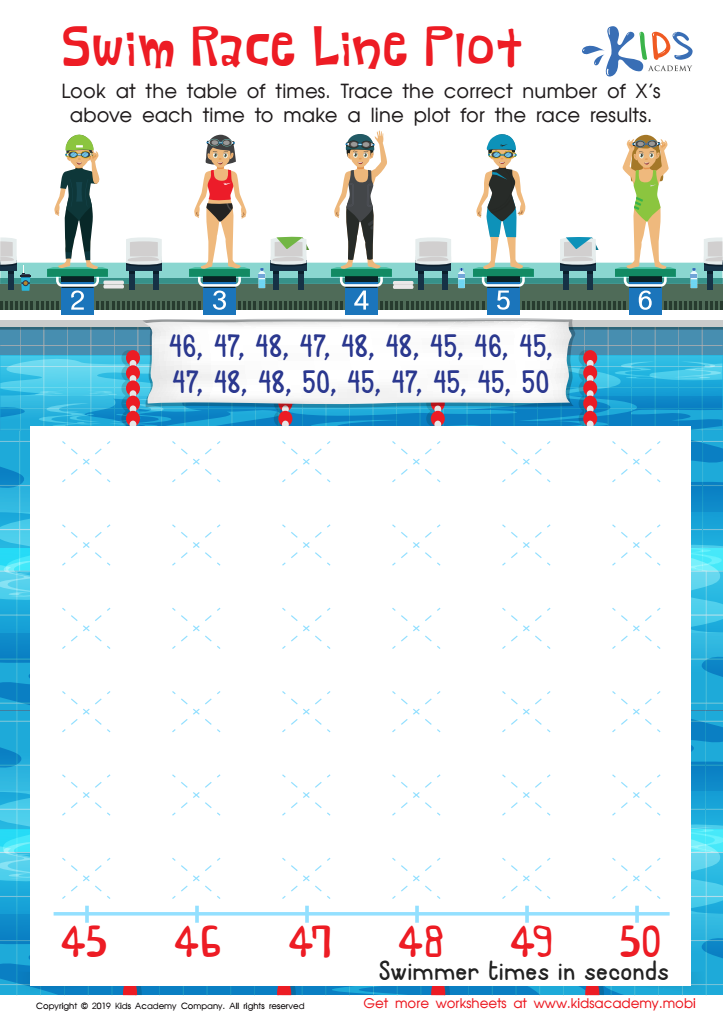Interpret graphs Worksheets for Kids
1 filtered results
-
From - To


Swim Race Line Plot Worksheet
Question/Answer
How to train the Interpret graphs skill in Grade 3 students learning about Addition & Subtraction?
To train Grade 3 students in interpreting graphs related to Addition & Subtraction, engage them with practical, hands-on activities. Start with simple bar graphs showing easy addition and subtraction data.
What are some effective activities to train students’ Interpret graphs skill when teaching them about Addition & Subtraction?
Effective activities include using real-world data to create simple bar graphs or pictographs and asking students to add or subtract values represented in the graphs. Interactive games where students race to solve graph-based addition or subtraction problems can also reinforce skills.
Why is the Interpret graphs skill important for Grade 3 students?
The skill of interpreting graphs for Grade 3 students is essential because it lays the foundational groundwork for critical thinking and data analysis. It equips them with the ability to visually understand and analyze information, fostering problem-solving skills. This competence is crucial for their academic progression in math and sciences, and for understanding real-world scenarios that involve data interpretation.
 Assign to the classroom
Assign to the classroom












